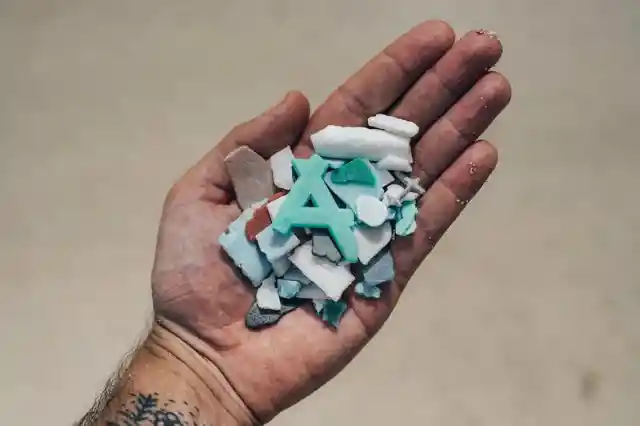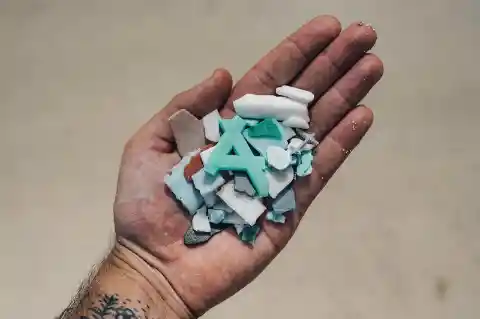Ways To Avoid Microplastic In Your Food
By
jagriti /
Oct 13, 2023
In the case of plastic garbage, what goes around, literally comes around. The plastic items we discard on a daily basis disintegrate into tiny pieces and eventually return to us as microplastics. In fact, as you read this post, you might be munching on it from your plate of snacks.
What are microplastics and how harmful are they?
Microplastics are little pieces of plastic that come from the breakdown of bigger plastics as well as the design of commercial products. Concern over the safety of seafood was at the forefront a few years ago when microplastics started to appear in the intestines of fish and shellfish. Shellfish in particular caused concern because, unlike fish, we consume the entire animal when we eat it, including the stomach and all of its microplastics. According to recent research, humans consume five grams of micro and nano plastics per week. Even the tiniest microplastic particles can cross the intestinal barrier and enter the bloodstream. These plastic specks can then go on to other bodily parts. Microplastic exposure in humans has been linked to oxidative stress, DNA damage, and inflammation, among other health issues, according to a study. Inflammation, especially when it persists over an extended period of time, can lead to potentially significant health issues. The surface of microplastics in the environment is populated by microorganisms, some of which have been identified as human diseases, making them potentially dangerous in addition to the plastic particles themselves.
How to avoid microplastics in your food?
1. Avoid drinking bottled water Before getting bottled, the water goes through many production processes. And if that’s not enough, bottled water is frequently preserved for months before it reaches your tongue. By storing and changing the temperature, chemicals are released from the bottle into the water. On average, it contains twice as much microplastic as tap water. So try avoiding plastic bottled water. Fill a reusable glass, stainless steel, or silicone bottle with tap water instead of a new plastic bottle every day. 2. Avoiding microwaving food in plastic containers While it may be tempting to microwave leftovers or takeout straight in the container, the BPA and phthalates added to plastic can leach into your food on heating. This includes plastic Tupperware, takeaway boxes, lids, and pre-made, frozen meals that are microwaved right in the container. Transfer food to a ceramic or glass container instead, or keep a couple of plates at the workplace for lunch. 3. Avoid processed food Consumption of highly processed foods, such as hamburgers, ready-to-eat convenience meals, French fries, ice cream, drinks, and canned goods, has been linked to greater levels of phthalate microplastics in the body. This effect is stronger in children. Experts believe that the low nutritional content of highly processed foods, combined with the negative impacts of microplastics found in certain foods, may be to blame for the development of chronic illnesses such as heart disease. 4. Reduce consumption of shellfish Seafood is an important part of our diet. But it might not be as healthy as you believe. After water, shellfish are the second most common source of microplastic. This is because many marine creatures accidentally ingest floating plastic waste. As a result, traces of small plastics are found throughout their bodies, which are later consumed by humans. 5. Avoid sea salt If our oceans are turning into one big plastic soup, it makes sense that sea salt has become contaminated as well. After all, the process of producing sea salt involves the use of seawater and allowing it to evaporate. Choose rock salt from ancient caves or mountains that contains little to no microplastic. 6. Avoid using takeaway cups Paper takeaway cups, like food in a plastic takeout container, release microplastics when subjected to heat. That implies your morning cup of hot coffee in a disposable cup contributes to your daily microplastic consumption. Most of these paper cups are lined with HDPE grade plastic, which is deemed "safe" but has been proved to leak estrogenic compounds, and some even contain heavy metals. Invest in a reusable coffee cup made of stainless steel or glass to use at your favorite coffee establishment. 7. Avoid plastic-free cosmetics Even the things we use to cleanse our bodies and brush our teeth contain microplastics. Some lotions, as well as many toothpastes and facial/body washes, contain plastic to aid absorption. Microbeads, which are visible plastic particles used for exfoliation, were banned in rinse-off cosmetics in 2015, but companies found ways around the law. Examine product ingredient lists to ensure that plastic is not contained, especially phrases synonymous with plastic such as "acrylate copolymer," among others. Choose microbead-free and plastic-free alternatives or natural goods with biodegradable alternatives to microbeads. 8. Replace tea bags with loose tea Plastic has made its way into your teabag, believe it or not. Many current tea bags are sealed together using a dab of polypropylene, a type of plastic. Pouring boiling water over your favorite tea results in the ingestion of thousands of microplastics with each brew. Replace tea bags with loose leaf tea and steep them in recyclable, refillable linen tea bags or tea balls. Consider preparing your own tea at home as well. 9. Choose wisely while going cloth shopping Nylon, polyester, acrylic, and other synthetic fibers currently account for 60% of all clothing materials. These fabrics are popular because of their versatility, affordability, and durability, which provide protection in cold weather and breathability in athletic wear; however, each item made from these materials emits hundreds of thousands of microplastics per wash, with acrylic fabrics emitting over 700,000 per cycle.

